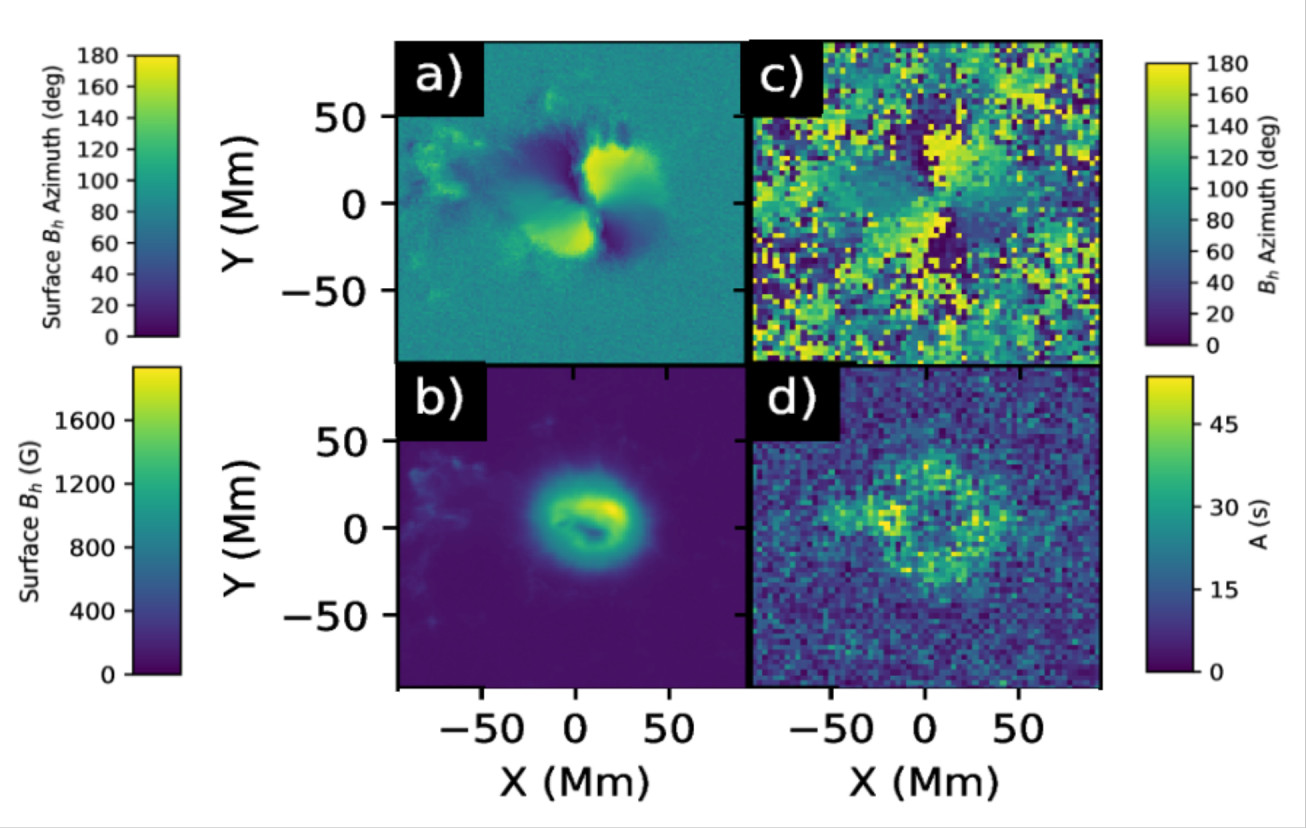Author: John T Stefan
Apr 29, 2022

We derive a time-distance helioseismic measurement technique which isolates phase travel time anisotropy caused by subsurface horizontal magnetic fields from other perturbative sources. It is well-known that the travel time contribution from flows may be removed by taking the mean of the forward-propagating and backward-propagating travel time deviations. The remaining contributions are from the magnetic field – which depends on the direction of the measuring ray – as well as sound speed perturbations, cut-off frequency perturbations, and others-which do not depend on the ray’s direction. Subtracting orthogonal mean travel time deviations removes these non- directional contributions and isolates the effect of the horizontal magnetic field. By considering a pair of mean travel time differences (NS-EW and NESW-SENW), we can determine the azimuth of the horizontal magnetic field as well as a direct travel time proxy for the field’s magnitude.
After verifying the technique using MHD simu- lations of a uniform magnetic field (Parchevsky & Kosovichev, 2009) and a sunspot with known sub- surface structure (Rempel, 2012), we then apply the technique to study several active regions observed by HMI for depth ranges 5-7 Mm, 7-10 Mm, and 10-13 Mm. We show in Figure 1 an example of our results for AR 12218, where the left column corresponds to surface observations and the right column to the subsurface horizontal magnetic field’s derived azimuth (1c) and travel time anisotropy (1d). For this particular sunspot, we find that the region of enhanced horizontal magnetic field is slightly larger at 7-10 Mm than at the surface, with some indication of connection with the magnetic patch to the East. The subsurface field’s azimuth is similar to that at the surface, and the technique manages to capture the hook-like structure at the sunspot’s northern edge. Additionally, there is some realignment of the field in the sunspot’s southern half. This work serves as a proof-of-concept that subsurface magnetic fields-at least the horizontal component-are measurable with helioseismology. Future work will focus on reducing the noise level as well as developing an inversion technique to determine the actual magnitude of the horizontal field.
Stefan, J. T., & Kosovichev, A. G. (2022), 'Detection of Travel Time Anisotropy from Subsurface Horizontal Magnetic Fields'. ApJ, 930, 10. DOI:10.3847/1538-4357/ac602a